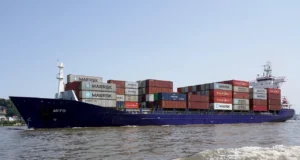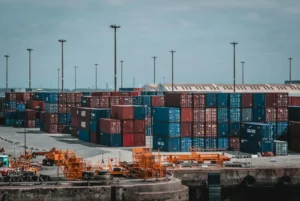International trade is a major conversation right now.
Tariffs have emerged as a crucial topic, especially in light of recent developments concerning President Donald Trump’s tariffs on trade, particularly those impacting imported goods from countries like China and Hong Kong.
Tariffs have the potential to reshape the dynamics of global trade and to significantly affect shipping costs, supply chains and the economy of domestic products.
The Basics of Tariffs
Before examining the impact of tariffs on shipping costs, it’s essential to understand what tariffs are.
Essentially, tariffs on goods are taxes imposed by a government on imported goods.
These taxes aim to generate revenue for the government. They also serve to protect domestic industries from foreign competition by raising the price of imported goods.
When tariffs are applied, they create an additional cost for businesses and consumers alike.
Types of Tariffs
There are several types of tariffs that governments may impose:
1. Specific Tariffs – A fixed fee levied on a particular item, regardless of its price.
For instance, a specific tariff may charge a certain tax on each vehicle imported.
2. Ad Valorem Tariffs – These are based on the value of the good, usually a percentage of its price.
For example, a 10% tariff on a £500 product would result in a £50 tax.
3. Compound Tariffs – A combination of both specific and ad valorem tariffs.
Tariffs Imposed by the United States
Recent conversations have surrounded the US and President Trump’s tariffs. Whilst AP+ isn’t directly affected by this, every country in the world is likely to be indirectly affected in some way.
During Trump’s administration has imposed a range of tariffs, particularly on goods imported from China and Hong Kong.
These tariffs affected a wide array of products, ranging from electronics to machinery and create ripple effects across various sectors.
These tariffs were politically motivated, designed to protect domestic industries and jobs.
By increasing the cost of goods from other countries, the U.S. government aimed to encourage consumers to buy domestic products instead.
This approach raised numerous questions about its effectiveness and the broader implications for international trade.
The Impact on Shipping Costs
When tariffs are levied on imported goods, shipping costs inevitably rise.
This increase can be attributed to several factors:
1. Increased Cost of Goods
Goods subjected to tariffs incur additional costs during their transportation to the U.S. and other international marketplaces.
Importers typically pass these costs onto consumers. This results in higher shipping expenses.
For businesses relying on international suppliers, this means recalibrating budgets. This could lead to higher prices for end-users.
2. Change in Supply Chains
Tariffs disrupt established supply chains. Companies may seek to reduce costs by moving production elsewhere or sourcing materials from different regions.
This change can lead to inefficient logistics and higher shipping costs. This is especially true if companies need to establish new relationships with suppliers or adapt to different shipping routes.
3. Adjustments to Trade Agreements
The imposition of tariffs changes the landscape of trade agreements.
Countries affected by U.S. tariffs may retaliate with their tariffs. This has the potential to complicate international trade.
These retaliatory measures can lead to increased shipping costs as businesses scramble to navigate new regulations and costs. They can impact the accessibility of goods from other countries.
Who Pays the Tariffs?
One common misconception is that the government pays tariffs.
In reality, tariffs impact the various players involved in trade including importers, exporters and consumers.
While the tariffs are paid by importers at the port, those costs ultimately trickle down to consumers.
This creates an additional layer of complexity in the pricing of goods sourced internationally.
When considering the shipping costs associated with imported goods, it becomes evident that tariffs directly contribute to escalating expenses.
Importers may absorb some costs initially, but as margins shrink, they are forced to pass these tariffs onto consumers. This leads to increased prices for everyday items.
Tariffs Impact on Domestic Products and Protectionism
While tariffs may be intended to protect domestic industries, their effects can be unclear.
Increased prices resulting from tariffs on imported goods could lead domestic manufacturers to raise their prices as well, knowing that consumers have fewer alternatives.
While domestic products are shielded from foreign competition, consumers may pay a premium for these goods.
The ultimate effectiveness of this approach is debated. Industries may not necessarily improve or innovate simply because they are protected by tariffs.
Shipping Costs and Consumer Behaviour
Research indicates that when prices rise due to tariffs, consumer behaviour often shifts.
With increased shipping costs due to tariffs, consumers may gravitate towards cheaper alternatives. These may not always align with the intention behind these protective measures.
Consumers often look for the most economically viable option. While domestic products may initially seem more attractive, the overall increase in prices can diminish this appeal.
As a result, the net effect of tariffs can lead to a decrease in sales for domestic products. This then negates their intended purpose.
The Role of the Commercial Invoice and Country of Origin
When importing goods, a critical document called the commercial invoice accompanies shipments.
This invoice outlines the transaction between the buyer and the seller. It details the goods, their value and the country of origin.
The country of origin plays a pivotal role in determining applicable tariffs.
If a product is manufactured in a country subjected to higher tariffs, it further complicates shipping costs and pricing structures.
Importers must be diligent in correctly reporting the country of origin to avoid legal issues and ensure accurate tariff assessments.
The Future of Tariffs and Global Trade
Looking ahead, the landscape of international trade continues to evolve. Tariffs remain a significant factor.
Changes in administration, global economic conditions and trade agreements will all have lasting impacts on how tariffs shape shipping costs and drive consumer behaviour.
The challenges posed by tariffs highlight the interconnectedness of global supply chains.
Countries around the world depend on imports and exports. Any disruptions to this balance can have far-reaching consequences.
In response to evolving circumstances, businesses must remain agile. They must seek alternative suppliers or adjust logistics to maintain efficiency and control costs.
Creating transparent trade relationships and negotiating fair trade agreements will become increasingly vital as nations strive for economic growth while navigating the complexities of tariffs.
Balancing Protection and Trade
Ultimately, finding a balance between protecting domestic industries and promoting healthy international trade will be crucial.
Increased tariffs can deter innovation and competitiveness. They can stifle growth for both importers and manufacturers. A free trade environment promotes collaboration and encourages enhancements in quality, efficiency and customer service.
By exploring and understanding how tariffs impact shipping costs, businesses and consumers can remain informed and adapt to the dynamic global trade landscape.
Doing so will pave the way for joint prosperity in a world that is increasingly interconnected and interdependent.
Tariffs are taxes imposed on imported goods that have far-reaching consequences for shipping costs and international trade.
As seen through the lens of Trump’s trade policies, tariffs can disrupt supply chains, create additional costs and alter consumer behaviour.
The complexity of modern trade requires a nuanced understanding of these dynamics, particularly as businesses strive to navigate the challenges and opportunities of an evolving economic landscape.
As tariffs are reassessed and trade agreements continue to develop, keeping a close eye on shipping costs and the connection to tariffs will be essential for businesses and consumers alike. This will ensure a well-informed approach to navigating the future of global trade.








